 Search by Keyword
|
“MAGICAL MYSTERY TOUR”
(John Lennon – Paul McCartney)
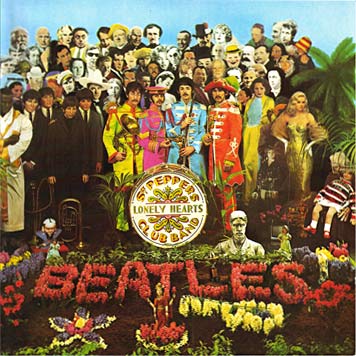 The Beatles were on a roll! The group had expanded the pop album format from just a collection of songs to the realm of a fantasy program, taking on the alter egos of “Sgt. Pepper’s Lonely Hearts Club Band.” With the sound of an audience spurring them on, they took to an imaginary stage and became as many varied acts as suited their fancy, creating the most vividly colorful variety show imaginable. Their fans were taken on an incredible journey with the promise that “a splendid time is guaranteed for all!” Critics and audiences the world over were overwhelmingly impressed. They didn’t fail to win over the hearts of loyal fans, gaining many more in the process. The Beatles were on a roll! The group had expanded the pop album format from just a collection of songs to the realm of a fantasy program, taking on the alter egos of “Sgt. Pepper’s Lonely Hearts Club Band.” With the sound of an audience spurring them on, they took to an imaginary stage and became as many varied acts as suited their fancy, creating the most vividly colorful variety show imaginable. Their fans were taken on an incredible journey with the promise that “a splendid time is guaranteed for all!” Critics and audiences the world over were overwhelmingly impressed. They didn’t fail to win over the hearts of loyal fans, gaining many more in the process.
What could possibly happen next? Should The Beatles be expected to take their audience on yet another journey next time around? Well before the first journey was unleashed upon the public, Paul McCartney had already envisioned the next experience the group was to unveil. In harmony with the “summer of love” mentality of the times, Paul sought to take us all on a “Magical Mystery Tour” where anything can happen.
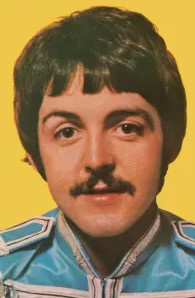 Although the concept had yet to fully materialize, Paul had enough of an idea to get the project rolling. Just as the “Sgt. Pepper” fantasy needed a theme song, it appeared that he needed one for this venture as well. With this skeleton of an idea, he brought together the boys to construct the theme song, aptly named “Magical Mystery Tour,” to get the ball rolling, with the thought that they’d figure out the rest along the way. And, in this process, they recorded a song that created the visionary atmosphere to whet the appetite for the excitement that would follow…whatever it would be. Although the concept had yet to fully materialize, Paul had enough of an idea to get the project rolling. Just as the “Sgt. Pepper” fantasy needed a theme song, it appeared that he needed one for this venture as well. With this skeleton of an idea, he brought together the boys to construct the theme song, aptly named “Magical Mystery Tour,” to get the ball rolling, with the thought that they’d figure out the rest along the way. And, in this process, they recorded a song that created the visionary atmosphere to whet the appetite for the excitement that would follow…whatever it would be.
Songwriting History
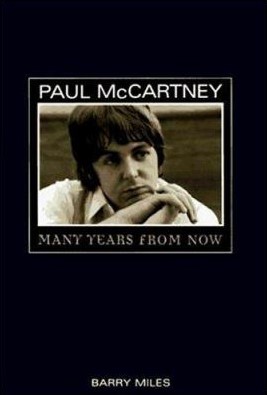 Just after the completion of the recording for the “Sgt. Pepper” album, “Paul decided to pay a surprise visit to Jane (Asher) on her twenty-first birthday on 5 April,” explains Barry Miles in his book “Many Years From Now.” “Paul had his movie camera with him and it was two days later, while filming in a Denver park, that he came up with using a mystery tour as the basis for a television special. Ideas fell quickly into place and it became a magical mystery tour: a typical Beatles combination of northern working-class culture and taking the fans on an acid trip.” Just after the completion of the recording for the “Sgt. Pepper” album, “Paul decided to pay a surprise visit to Jane (Asher) on her twenty-first birthday on 5 April,” explains Barry Miles in his book “Many Years From Now.” “Paul had his movie camera with him and it was two days later, while filming in a Denver park, that he came up with using a mystery tour as the basis for a television special. Ideas fell quickly into place and it became a magical mystery tour: a typical Beatles combination of northern working-class culture and taking the fans on an acid trip.”
 “It used to just be called a mystery tour, up north,” Paul explains. “When we were kids, you’d get on a bus, and you didn’t know where you were going, but nearly always it was Blackpool. From Liverpool, it was inevitably Blackpool and everyone would go, ‘Oooo, it was Blackpool after all!’ Everyone would spend time guessing where they were going, and this was part of the thrill. And we remembered those. So much of The Beatles’ stuff was a slight switch on a memory; in ‘Penny Lane,’ the nurse and the barber and the fireman were just people we saw on a bus route, but this time they’d be with us. So we’d always just heighten the reality to make a little bit of surreality. That we were interested in.” “It used to just be called a mystery tour, up north,” Paul explains. “When we were kids, you’d get on a bus, and you didn’t know where you were going, but nearly always it was Blackpool. From Liverpool, it was inevitably Blackpool and everyone would go, ‘Oooo, it was Blackpool after all!’ Everyone would spend time guessing where they were going, and this was part of the thrill. And we remembered those. So much of The Beatles’ stuff was a slight switch on a memory; in ‘Penny Lane,’ the nurse and the barber and the fireman were just people we saw on a bus route, but this time they’d be with us. So we’d always just heighten the reality to make a little bit of surreality. That we were interested in.”
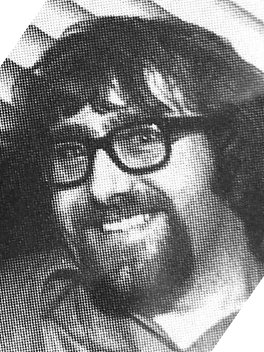 This trip to America took place between April 3rd and 12th, 1967, but it was on the flight home that he actually began to plot out the contents of the film as well as its theme song. “Paul picked up the idea again on the overnight flight back to England on 11 April with Mal (Evans). He borrowed a notepad from a stewardess and made notes for the lyrics of the title song; then he began to plan out the film using a circle to represent the sixty minutes of a television special and slotting in various ideas for events.” This trip to America took place between April 3rd and 12th, 1967, but it was on the flight home that he actually began to plot out the contents of the film as well as its theme song. “Paul picked up the idea again on the overnight flight back to England on 11 April with Mal (Evans). He borrowed a notepad from a stewardess and made notes for the lyrics of the title song; then he began to plan out the film using a circle to represent the sixty minutes of a television special and slotting in various ideas for events.”
As for the “Magical Mystery Tour” song, we see that it started to be written by Paul on this return flight on April 11th, 1967. However, much more was needed to be done to bring it to the complete form as we know it. As we’ll see in the next section, the rough idea Paul had for the song actually developed in EMI Studio Three while it was being recorded. Therefore, the writing of the song stretches from April 11th to May 3rd, 1967.
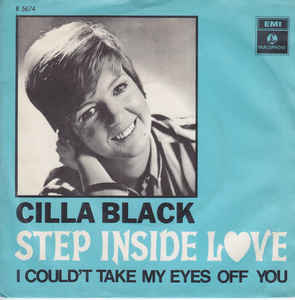 As to John Lennon’s involvement in the song’s writing, he informed Playboy Magazine in 1980 that it was “Paul’s song. I helped with the lyrics, but it was Paul’s concept.” Paul also told of John’s involvement in authorship, saying: "’Magical Mystery Tour’ was co-written by John and I, very much in our fairground period. One of our great inspirations was always the Barker. ‘Roll up! Roll up!’ The promise of something: the newspaper ad that says ‘guaranteed not to crack,’ the ‘high class’ butcher, ‘satisfaction guaranteed’ from ‘Sgt. Pepper.’ ‘Come inside,’ ‘Step Inside, Love’; you’ll find that pervades a lot of my songs. If you look at all the Lennon / McCartney things, it’s a thing we do a lot." As to John Lennon’s involvement in the song’s writing, he informed Playboy Magazine in 1980 that it was “Paul’s song. I helped with the lyrics, but it was Paul’s concept.” Paul also told of John’s involvement in authorship, saying: "’Magical Mystery Tour’ was co-written by John and I, very much in our fairground period. One of our great inspirations was always the Barker. ‘Roll up! Roll up!’ The promise of something: the newspaper ad that says ‘guaranteed not to crack,’ the ‘high class’ butcher, ‘satisfaction guaranteed’ from ‘Sgt. Pepper.’ ‘Come inside,’ ‘Step Inside, Love’; you’ll find that pervades a lot of my songs. If you look at all the Lennon / McCartney things, it’s a thing we do a lot."
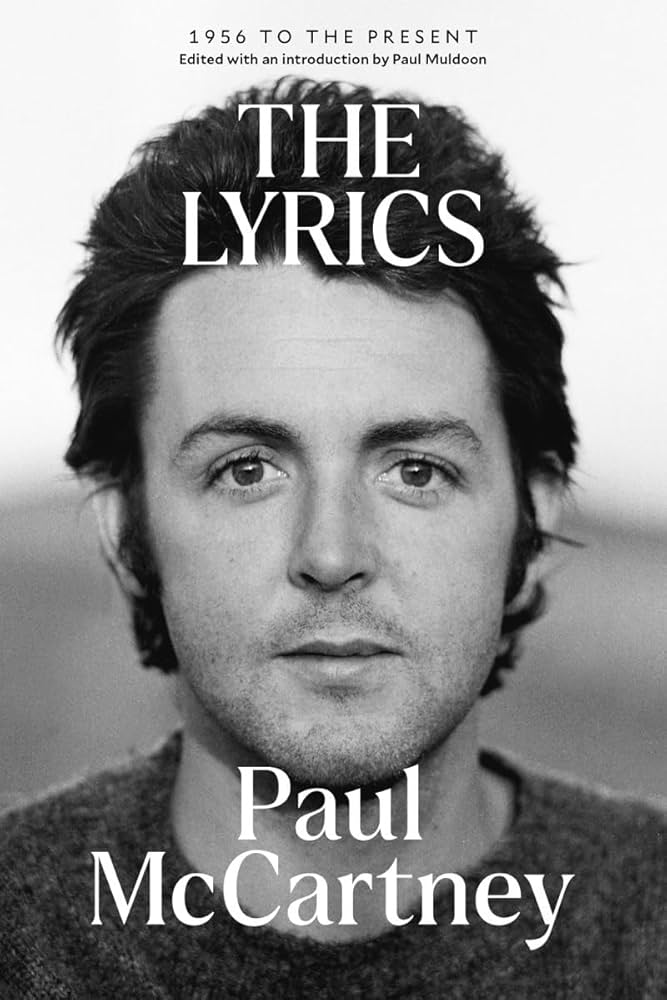 In the 2023 paperback edition of his book "The Lyrics," Paul adds: "'Satisfaction guaranteed' is like 'roll up'; they are phrases that you'd heard a million times. It's the kind of thing you'd see on an advert for a vacuum cleaner or something, and The Rolling Stones had used the word so effectively a couple years before." In the 2023 paperback edition of his book "The Lyrics," Paul adds: "'Satisfaction guaranteed' is like 'roll up'; they are phrases that you'd heard a million times. It's the kind of thing you'd see on an advert for a vacuum cleaner or something, and The Rolling Stones had used the word so effectively a couple years before."
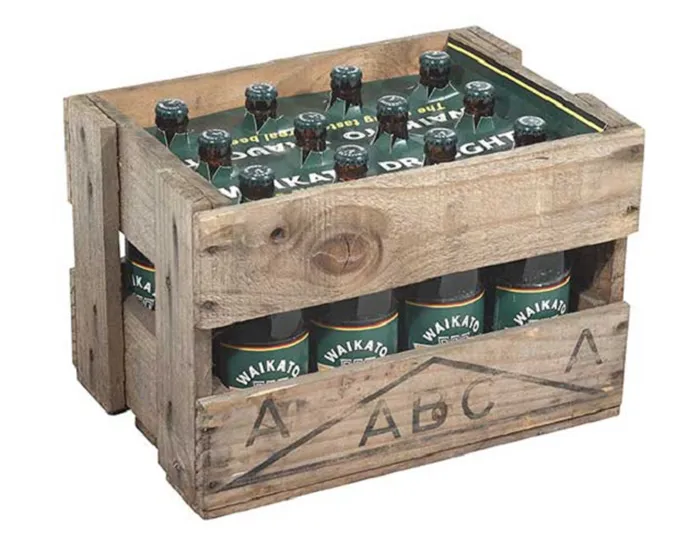 “John and I remembered mystery tours,” Paul continues, “and we always thought this was a fascinating idea: getting on a bus and not knowing where you were going. Rather romantic and slightly surreal! All these old dears with the blue rinses going off to mysterious places. Generally there’s a crate of ale in the boot of the coach and you sing lots of songs. It’s a charabanc trip. So we took that idea and used it as a basis for a song and the film." “John and I remembered mystery tours,” Paul continues, “and we always thought this was a fascinating idea: getting on a bus and not knowing where you were going. Rather romantic and slightly surreal! All these old dears with the blue rinses going off to mysterious places. Generally there’s a crate of ale in the boot of the coach and you sing lots of songs. It’s a charabanc trip. So we took that idea and used it as a basis for a song and the film."
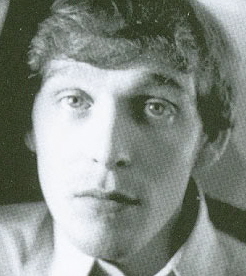 Paul elaborates on the ideas that he and John (and possibly George, Ringo, Mal Evans and Neil Aspinall, as evidence suggests) conspired to inject into the song's lyrics: “I used to go to the fairgrounds as a kid, the waltzers and the dodgems, but what interested me was the freak shows: the boxing booths, and bearded lady and the sheep with five legs, which actually was a four-legged sheep with one leg sewn on its side. When I touched it, the fellow said, ‘Hey, leave that alone!’ These were the great things of your youth. So much of your writing comes from this period; your golden memories. If I’m stuck for an idea, I can always think of a great summer, think of a time when I went to the seaside. Okay, sand, sun, waves, donkeys, laughter. That’s a pretty good scenario for a song.” Paul elaborates on the ideas that he and John (and possibly George, Ringo, Mal Evans and Neil Aspinall, as evidence suggests) conspired to inject into the song's lyrics: “I used to go to the fairgrounds as a kid, the waltzers and the dodgems, but what interested me was the freak shows: the boxing booths, and bearded lady and the sheep with five legs, which actually was a four-legged sheep with one leg sewn on its side. When I touched it, the fellow said, ‘Hey, leave that alone!’ These were the great things of your youth. So much of your writing comes from this period; your golden memories. If I’m stuck for an idea, I can always think of a great summer, think of a time when I went to the seaside. Okay, sand, sun, waves, donkeys, laughter. That’s a pretty good scenario for a song.”
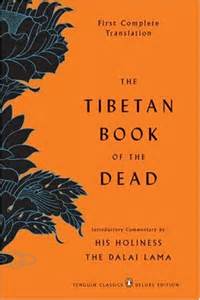 "Because those were psychedelic times it had to become a magical mystery tour, a little bit more surreal than the real ones to give us a license to do it. But it employs all the circus and fairground barkers, ‘Roll up! Roll up!,’ which was also a reference to rolling up a joint. We were always sticking those little things in that we knew our friends would get; veiled references to drugs and to trips. ‘Magical Mystery Tour is waiting to take you away,’ so that’s a kind of drug, ‘it’s dying to take you away’ so that’s a ‘Tibetan Book Of The Dead’ reference. We put all these words in and if you were just an ordinary person, it’s a nice bus that’s waiting to take you away, but if you’re tripping, it’s dying, it’s the real tour, the real magical mystery tour. We stuck all that stuff in for our ‘in group’ of friends really.” "Because those were psychedelic times it had to become a magical mystery tour, a little bit more surreal than the real ones to give us a license to do it. But it employs all the circus and fairground barkers, ‘Roll up! Roll up!,’ which was also a reference to rolling up a joint. We were always sticking those little things in that we knew our friends would get; veiled references to drugs and to trips. ‘Magical Mystery Tour is waiting to take you away,’ so that’s a kind of drug, ‘it’s dying to take you away’ so that’s a ‘Tibetan Book Of The Dead’ reference. We put all these words in and if you were just an ordinary person, it’s a nice bus that’s waiting to take you away, but if you’re tripping, it’s dying, it’s the real tour, the real magical mystery tour. We stuck all that stuff in for our ‘in group’ of friends really.”
Recording History
With Paul back in Britain on April 12th, 1967, his “Magical Mystery Tour” idea firmly in mind, he and The Beatles first concentrated on the immediate task at hand, which was finishing up on helping create the mono and stereo mixes for the soon-to-be-released “Sgt. Pepper” album. He took this time also to introduce this new project to his band for their approval. “We thought that we had better do it,” John Lennon remembers, adding: “we had the feeling that we owed it to the public to do these things.” Therefore, nearly two weeks after Paul returned from America, and after “Sgt. Pepper” was completely ready for release, they began work on the theme song for “Magical Mystery Tour.”
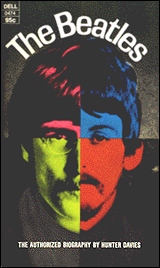 This day was April 25th, 1967, the group assembling this time in EMI Studio Three. Hunter Davies, the group’s official biographer who was present on this day, wrote about the details of this session in his authorized biography “The Beatles.” He writes: “When The Beatles arrived at the EMI studios at seven thirty one evening to record ‘Magical Mystery Tour,’ all they had was the title and a few bars of the music…Paul played the opening bars of ‘Magical Mystery Tour’ on the piano, showing the others how it would go. He gestured a lot with his hands and shouted ‘Flash, Flash,’ saying it would be like a commercial.” Engineer Geoff Emerick, also there for this session, relates other details of the events of this day in his book “Here, There And Everywhere.” “Everyone was quite up for that session…There was a long period of rehearsal punctuated by discussion about the various scenes they wanted to shoot for the film.” This day was April 25th, 1967, the group assembling this time in EMI Studio Three. Hunter Davies, the group’s official biographer who was present on this day, wrote about the details of this session in his authorized biography “The Beatles.” He writes: “When The Beatles arrived at the EMI studios at seven thirty one evening to record ‘Magical Mystery Tour,’ all they had was the title and a few bars of the music…Paul played the opening bars of ‘Magical Mystery Tour’ on the piano, showing the others how it would go. He gestured a lot with his hands and shouted ‘Flash, Flash,’ saying it would be like a commercial.” Engineer Geoff Emerick, also there for this session, relates other details of the events of this day in his book “Here, There And Everywhere.” “Everyone was quite up for that session…There was a long period of rehearsal punctuated by discussion about the various scenes they wanted to shoot for the film.”
Hunter Davies goes to great pains to describe the general atmosphere in the studio on that day, relating details and events as they happened, right down to their clothes. “John was wearing an orange cardigan, purple velvet trousers, and a sporran. He opened the sporran and took out some pot, which he lit, then passed round. They all had a drag. Someone shouted that Anthony, John’s chauffeur, wanted him on the phone.”
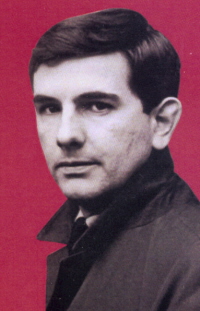 Detailing the rehearsal for the song, Hunter Davies explains: “They leaned round the piano while Paul was playing, going over and over the opening. Paul told Mal (Evans) to write down the order of how they would do the song. In a very slow schoolboy hand, Mal wrote down the title and got ready for Paul’s instructions. Paul said ‘Trumpets,’ yes they’d have some trumpets at the beginning, a sort of fanfare, to go with ‘Roll Up, Roll Up, for the Magical Mystery Tour.’ Mal had better write that line down as well, as it was the only line they had. Paul told Mal to write down DAE, the first three chords of the song. Mal sucked his pencil, waiting for more of Paul’s inspired words, but nothing came.” Detailing the rehearsal for the song, Hunter Davies explains: “They leaned round the piano while Paul was playing, going over and over the opening. Paul told Mal (Evans) to write down the order of how they would do the song. In a very slow schoolboy hand, Mal wrote down the title and got ready for Paul’s instructions. Paul said ‘Trumpets,’ yes they’d have some trumpets at the beginning, a sort of fanfare, to go with ‘Roll Up, Roll Up, for the Magical Mystery Tour.’ Mal had better write that line down as well, as it was the only line they had. Paul told Mal to write down DAE, the first three chords of the song. Mal sucked his pencil, waiting for more of Paul’s inspired words, but nothing came.”
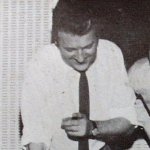 According to Mark Lewisohn’s book “The Beatles Recording Sessions,” the first thing actually recorded wasn’t even the group playing anything. “Although the final content of the song may have been in a state of flux,” Lewisohn relates, “one thing was clear: coach noises were required, and this meant another raid on the Abbey Road sound effects collection. ‘Volume 36: Traffic Noise Stereo’ satisfied requirements, especially since the sounds of the cars and lorries it contained ranged across a stereo image, passing from left to right or right to left. ‘I did that leaning over a bridge on the M1 motorway,’ recalls Stuart Eltham. ‘It was a quiet day, a Sunday, because that was the only way one could capture the sound of individual vehicles. On any other day all I would have had was a mass of traffic noise.’” Concerning these recordings, which were found by 2nd engineer Richard Lush, Geoff Emerick explains that he made them “into a loop, complete with the sounds of busses whizzing by in glorious stereo, panning from right to left.” These loops were put into the song later during the mixing stage. According to Mark Lewisohn’s book “The Beatles Recording Sessions,” the first thing actually recorded wasn’t even the group playing anything. “Although the final content of the song may have been in a state of flux,” Lewisohn relates, “one thing was clear: coach noises were required, and this meant another raid on the Abbey Road sound effects collection. ‘Volume 36: Traffic Noise Stereo’ satisfied requirements, especially since the sounds of the cars and lorries it contained ranged across a stereo image, passing from left to right or right to left. ‘I did that leaning over a bridge on the M1 motorway,’ recalls Stuart Eltham. ‘It was a quiet day, a Sunday, because that was the only way one could capture the sound of individual vehicles. On any other day all I would have had was a mass of traffic noise.’” Concerning these recordings, which were found by 2nd engineer Richard Lush, Geoff Emerick explains that he made them “into a loop, complete with the sounds of busses whizzing by in glorious stereo, panning from right to left.” These loops were put into the song later during the mixing stage.
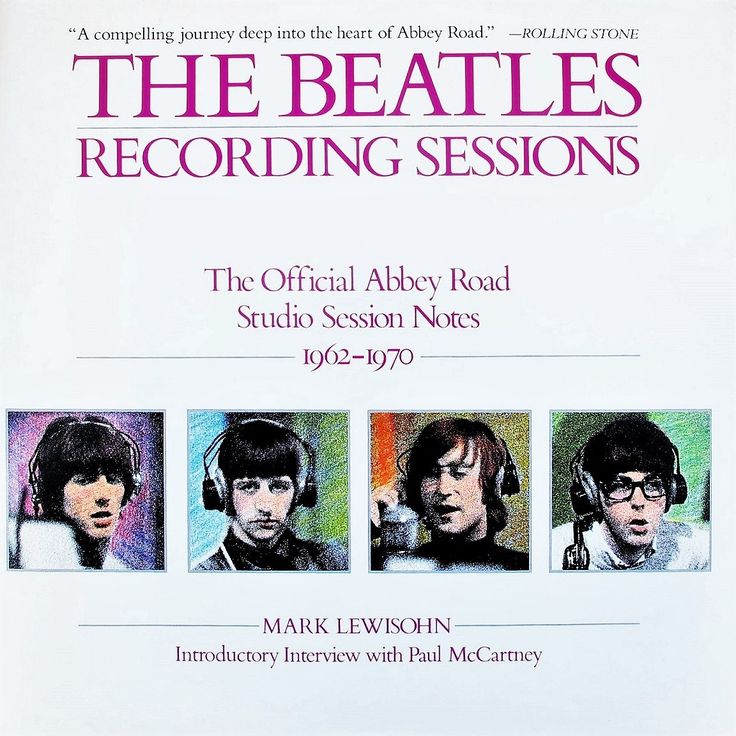 Hunter Davies continues the events of the day: “The instruments were then set up and they got ready to record the backing…John came back and asked Mal (Evans) if he’d gotten in touch with Terry (Doran) yet. Mal said he couldn’t get through to him. John said it was his job to get through. Just keep on until he did. It took a couple of hours to work out the first backing track and get it recorded.” In "The Beatles Recording Sessions," author Mark Lewisohn deciphers this as “a basic rhythm track of two guitars, piano and drums. Three takes were made, the third being best and this was then subjected to five reduction mixes, down to one track of a new tape, the final edition – 'take eight' – being marked ‘best basic.’” Since Geoff Emerick gives the detail of “Paul thumping away on the piano” during these takes, that leaves acoustic guitar by John, electric guitar by George and the drums obviously played by Ringo. Hunter Davies continues the events of the day: “The instruments were then set up and they got ready to record the backing…John came back and asked Mal (Evans) if he’d gotten in touch with Terry (Doran) yet. Mal said he couldn’t get through to him. John said it was his job to get through. Just keep on until he did. It took a couple of hours to work out the first backing track and get it recorded.” In "The Beatles Recording Sessions," author Mark Lewisohn deciphers this as “a basic rhythm track of two guitars, piano and drums. Three takes were made, the third being best and this was then subjected to five reduction mixes, down to one track of a new tape, the final edition – 'take eight' – being marked ‘best basic.’” Since Geoff Emerick gives the detail of “Paul thumping away on the piano” during these takes, that leaves acoustic guitar by John, electric guitar by George and the drums obviously played by Ringo.
 Hunter Davies continues: “After it was done, Paul went up to see George Martin in the control room. Paul had the track played back to him, again and again. Below in the studio, while Paul got the technicians to do things upstairs, George got a set of crayons out of his sheepskin painted waistcoat jacket and started to draw a picture. Ringo stared into space, smoking, looking very unhappy, which is his natural expression when he’s not talking. John was at the piano, sometimes playing quietly, other times jumping up, pretending to be a spastic, or thumping out loud corny tunes. No one was watching him. He smiled fiendishly to himself through his spectacles, like a Japanese gnome. Neil (Aspinall) was reading a pile of occult weeklies, which they’d all been thumbing through earlier in the evening. Mal (Evans) had disappeared.” Hunter Davies continues: “After it was done, Paul went up to see George Martin in the control room. Paul had the track played back to him, again and again. Below in the studio, while Paul got the technicians to do things upstairs, George got a set of crayons out of his sheepskin painted waistcoat jacket and started to draw a picture. Ringo stared into space, smoking, looking very unhappy, which is his natural expression when he’s not talking. John was at the piano, sometimes playing quietly, other times jumping up, pretending to be a spastic, or thumping out loud corny tunes. No one was watching him. He smiled fiendishly to himself through his spectacles, like a Japanese gnome. Neil (Aspinall) was reading a pile of occult weeklies, which they’d all been thumbing through earlier in the evening. Mal (Evans) had disappeared.”
At 3:45 am the next morning, the session was complete for the day, although the song wasn’t anywhere near complete in form or arrangement. This was left for later that evening.
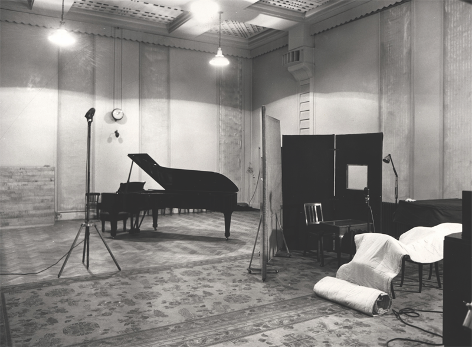 On April 26th, 1967, the next session began in EMI Studio Three sometime after 7 pm. Having reduced the previous day's rhythm track down to track one of a new tape, three new overdubs would be recorded on this day to fill up the remaining three tracks of this tape. On April 26th, 1967, the next session began in EMI Studio Three sometime after 7 pm. Having reduced the previous day's rhythm track down to track one of a new tape, three new overdubs would be recorded on this day to fill up the remaining three tracks of this tape.
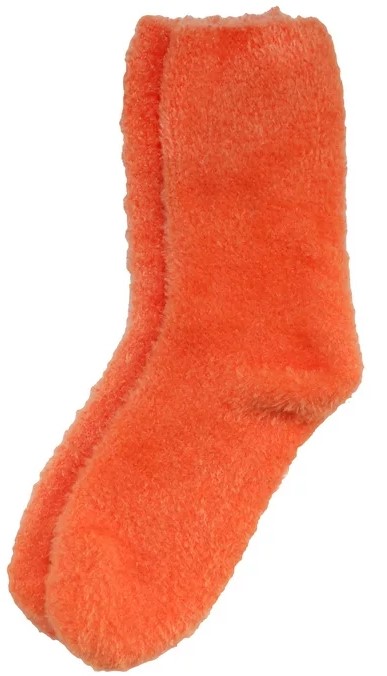 Hunter Davies was apparently present also on this day as he relates mundane details, which includes something quite different that John passed around to the others this time around. “Mal (Evans) appeared carrying a big brown paper bag full of socks, all in bright self-colors. He passed the bag to John first. He grabbed it in great delight. He chose several pairs of orange terry-towelling socks, then passed the bag around for the others to have a dip. The night before he had said, just in passing, ‘Socks, Mal.’” Hunter Davies was apparently present also on this day as he relates mundane details, which includes something quite different that John passed around to the others this time around. “Mal (Evans) appeared carrying a big brown paper bag full of socks, all in bright self-colors. He passed the bag to John first. He grabbed it in great delight. He chose several pairs of orange terry-towelling socks, then passed the bag around for the others to have a dip. The night before he had said, just in passing, ‘Socks, Mal.’”
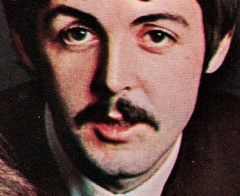 Paul also had instructed Mal Evans to bring something to this session, although this actually pertained to the work at hand. Hunter Davies relates: “After the socks had been handed out, Paul asked Mal if he’d managed to get any real mystery-tour posters. Mal said he had been round the bus stations all day looking for them. But he couldn’t find any. They had hoped that some real posters would have given them some ideas for the words of the song. Instead they all tried again to think of some good words apart from ‘Roll up, roll up,’ which was still all they had. As they shouted out ideas, Mal wrote them all down. ‘Reservation,’ ‘Invitation,’ ‘Trip of a lifetime,’ ‘Satisfaction guaranteed.’ But they soon got fed up. They decided they would just sing any words that came into their heads, just to see what happened. So they did.” Paul also had instructed Mal Evans to bring something to this session, although this actually pertained to the work at hand. Hunter Davies relates: “After the socks had been handed out, Paul asked Mal if he’d managed to get any real mystery-tour posters. Mal said he had been round the bus stations all day looking for them. But he couldn’t find any. They had hoped that some real posters would have given them some ideas for the words of the song. Instead they all tried again to think of some good words apart from ‘Roll up, roll up,’ which was still all they had. As they shouted out ideas, Mal wrote them all down. ‘Reservation,’ ‘Invitation,’ ‘Trip of a lifetime,’ ‘Satisfaction guaranteed.’ But they soon got fed up. They decided they would just sing any words that came into their heads, just to see what happened. So they did.”
These “backing vocal shouts…with much added echo,” as Mark Lewisohn describes them, were recorded onto track four of this new tape. Also, since "they all" began to "shout out ideas" for sloganistic words to use during this session, both Mal Evans and Neil Aspinall could very well have contributed an idea and therefore may possibly be considered collaborative composers to the song. Or not.
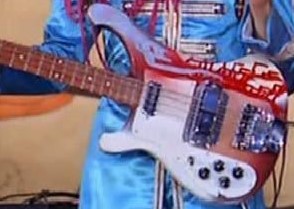 “When they’d finished that,” Hunter Davies continues, “Paul decided that on the next track he would add a bit of bass to the backing. He put on the headphones, so he could hear what they’d done so far, and strapped on his bass guitar.” This was recorded onto track two of the new tape. “After that he said they should add even more instruments. All of them, Paul, Ringo, John, George, Neil (Aspinall), and Mal (Evans), then picked up any old instruments that were lying around – maracas, bells, tambourines. They put on headphones and banged and played them to the music.” This was recorded onto track three of the new tape. “When they’d finished that,” Hunter Davies continues, “Paul decided that on the next track he would add a bit of bass to the backing. He put on the headphones, so he could hear what they’d done so far, and strapped on his bass guitar.” This was recorded onto track two of the new tape. “After that he said they should add even more instruments. All of them, Paul, Ringo, John, George, Neil (Aspinall), and Mal (Evans), then picked up any old instruments that were lying around – maracas, bells, tambourines. They put on headphones and banged and played them to the music.” This was recorded onto track three of the new tape.
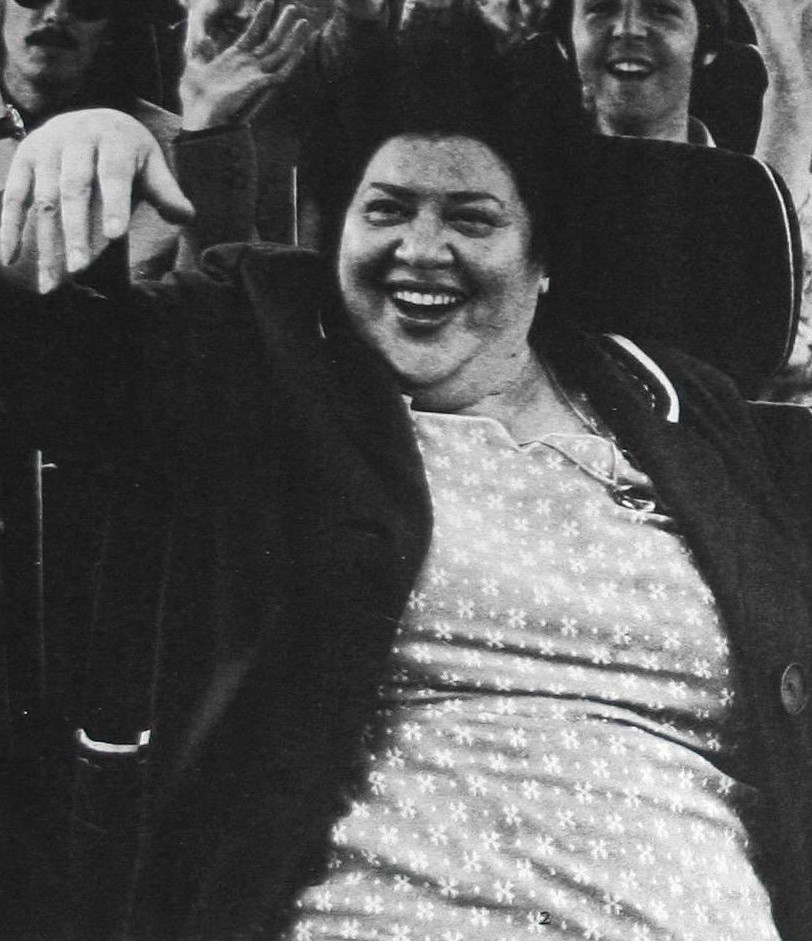 Throughout this day, according to Geoff Emerick, the group took to formulating some details regarding the television film that would go along with the song they were recording. “Paul showed up with a casting book that he had gotten from a film agency and everyone gathered around, excitedly picking the actors they wanted for the character roles…Everyone had great fun going through the book, shouting out as they flipped through the pages, ‘Look at him! Look at her!’ They were particularly amused by the photos of the fat lady who ended up playing Ringo’s Aunt Jessie: ‘She’s four times the size of you, Ring!’ Lennon chortled with glee.” Throughout this day, according to Geoff Emerick, the group took to formulating some details regarding the television film that would go along with the song they were recording. “Paul showed up with a casting book that he had gotten from a film agency and everyone gathered around, excitedly picking the actors they wanted for the character roles…Everyone had great fun going through the book, shouting out as they flipped through the pages, ‘Look at him! Look at her!’ They were particularly amused by the photos of the fat lady who ended up playing Ringo’s Aunt Jessie: ‘She’s four times the size of you, Ring!’ Lennon chortled with glee.”
Since all four tracks of this tape were now full, another reduction mix was made at the end of this session to free up more tracks for the trumpets Paul wanted, as well as the lead vocals and anything else they deemed necessary. This brought the finished recording at this point to take nine. At 2 am the next morning, this second session for “Magical Mystery Tour” was complete.
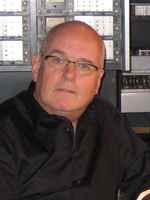 They returned to the song once again later that evening, April 27th, 1967, to add more overdubs. Once again getting to EMI Studio Three sometime after 7 pm, they concentrated on filling the two remaining tracks of the even newer tape with vocals. Paul recorded his lead vocals on one of the open tracks and John and George recorded backing vocals onto the other open track. “All that ‘Roll up, roll up for the Magical Mystery Tour’ bit was taped very slow,” Richard Lush remembers, “so that it played back very fast. They really wanted those voices to sound different.” They returned to the song once again later that evening, April 27th, 1967, to add more overdubs. Once again getting to EMI Studio Three sometime after 7 pm, they concentrated on filling the two remaining tracks of the even newer tape with vocals. Paul recorded his lead vocals on one of the open tracks and John and George recorded backing vocals onto the other open track. “All that ‘Roll up, roll up for the Magical Mystery Tour’ bit was taped very slow,” Richard Lush remembers, “so that it played back very fast. They really wanted those voices to sound different.”
The first mono mix of the song was also made on this day, although it only was intended for acetate discs to give to the group to hear how it sounded so far. George Martin, Geoff Emerick and Richard Lush took four attempts at getting this mono mix in the control room of EMI Studio Three, the fourth attempt being marked best. The session was then complete by 12:45 am the following morning.
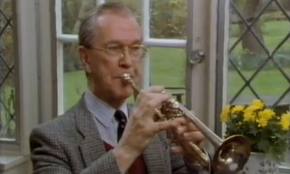 Six days later, on May 3rd, 1967, the trumpet overdub Paul wanted for the song was recorded, four brass musicians being hired for the evening including David Mason, who three-and-a-half months earlier had recorded the amazing piccolo trumpet solo for Paul’s “Penny Lane.” The session was held once again in EMI Studio Three, beginning sometime after 7 pm. Six days later, on May 3rd, 1967, the trumpet overdub Paul wanted for the song was recorded, four brass musicians being hired for the evening including David Mason, who three-and-a-half months earlier had recorded the amazing piccolo trumpet solo for Paul’s “Penny Lane.” The session was held once again in EMI Studio Three, beginning sometime after 7 pm.
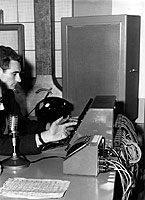 Surprisingly, Geoff Emerick was not available for this session, he being contracted to record a live performance of Adge Cutler & The Wurzels which was to be released in conjunction with a recent British #1 hit they’d had called “Drink Up Thy Zider.” “Incredibly,” Emerick relates, “they took me off a session booked by the biggest artists in the world so that I could get on a train and record a band in a tiny pub hundreds of miles away.” In Geoff’s absence, engineer Malcolm Addey filled in, even though he was known to chatter endlessly and disrupt proceedings, irritating both George Martin and George Harrison to no end. Surprisingly, Geoff Emerick was not available for this session, he being contracted to record a live performance of Adge Cutler & The Wurzels which was to be released in conjunction with a recent British #1 hit they’d had called “Drink Up Thy Zider.” “Incredibly,” Emerick relates, “they took me off a session booked by the biggest artists in the world so that I could get on a train and record a band in a tiny pub hundreds of miles away.” In Geoff’s absence, engineer Malcolm Addey filled in, even though he was known to chatter endlessly and disrupt proceedings, irritating both George Martin and George Harrison to no end.
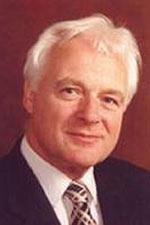 Either because of the time crunch, or just not bothering, no score was arranged beforehand for the brass musicians. Malcolm Addey remembers: “Paul McCartney was humming to the musicians the notes that he wanted, trying for a long time to get his thoughts across to them. In the end we had to send the trumpet players off for tea while Paul and George (Martin) worked things out on the studio three piano.” Philip Jones, who recalls his session musician friend Gary (Elgar) Howarth’s account, quotes him as saying he “got so fed up with them not knowing what they wanted that he wrote something out for them himself. It was his idea they used.” Either because of the time crunch, or just not bothering, no score was arranged beforehand for the brass musicians. Malcolm Addey remembers: “Paul McCartney was humming to the musicians the notes that he wanted, trying for a long time to get his thoughts across to them. In the end we had to send the trumpet players off for tea while Paul and George (Martin) worked things out on the studio three piano.” Philip Jones, who recalls his session musician friend Gary (Elgar) Howarth’s account, quotes him as saying he “got so fed up with them not knowing what they wanted that he wrote something out for them himself. It was his idea they used.”
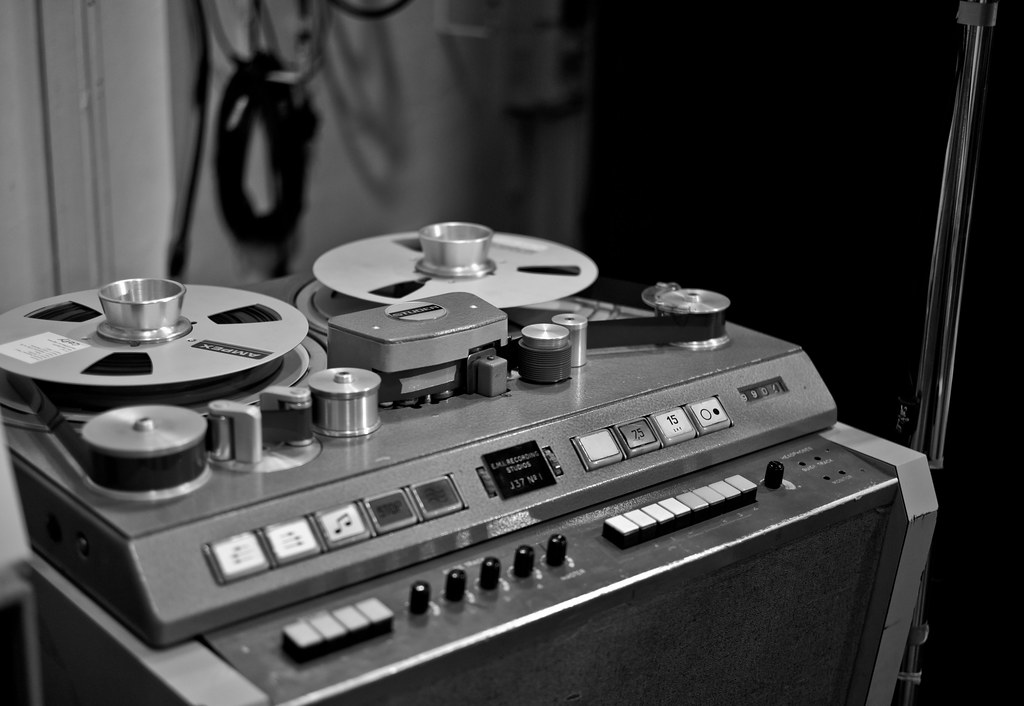 Undoubtedly because of Paul’s inability to convey what he wanted on the song, the session went overtime from the contracted 10 pm to 12:15 am the following morning. “Malcolm (Addey) had done a creditable job of recording the brass,” Geoff Emerick admits, “with the tape slowed down so that it would sound extra toppy when played back at normal speed…the brass was note-perfect, with not a fluff to be heard, despite the intricacy of the part.” Undoubtedly because of Paul’s inability to convey what he wanted on the song, the session went overtime from the contracted 10 pm to 12:15 am the following morning. “Malcolm (Addey) had done a creditable job of recording the brass,” Geoff Emerick admits, “with the tape slowed down so that it would sound extra toppy when played back at normal speed…the brass was note-perfect, with not a fluff to be heard, despite the intricacy of the part.”
 Later that evening, May 4th, 1967, the engineering staff of George Martin, Geoff Emerick and Richard Lush assembled in the control room of EMI Studio Three to create what was thought to be the finished mono mix for the song “Magical Mystery Tour.” They made seven attempts at the mono mix (numbered 1 through 7, ignoring the four numbered mono mixes made on April 27th, 1967), the seventh mix viewed as the best. Geoff Emerick recalls the results of the mix made on this day: “During the mix, Richard (Lush) added a lot of wobbly echo to the ‘roll up’ backing vocals, and the piano signal was fed through a Leslie, making it quite a production. All in all, more than four days were spent on the track, and the care that went into it really shows.” However, since a little more work was eventually deemed necessary to get the song to its finished state, the mono mixes made on this day could not be used. Later that evening, May 4th, 1967, the engineering staff of George Martin, Geoff Emerick and Richard Lush assembled in the control room of EMI Studio Three to create what was thought to be the finished mono mix for the song “Magical Mystery Tour.” They made seven attempts at the mono mix (numbered 1 through 7, ignoring the four numbered mono mixes made on April 27th, 1967), the seventh mix viewed as the best. Geoff Emerick recalls the results of the mix made on this day: “During the mix, Richard (Lush) added a lot of wobbly echo to the ‘roll up’ backing vocals, and the piano signal was fed through a Leslie, making it quite a production. All in all, more than four days were spent on the track, and the care that went into it really shows.” However, since a little more work was eventually deemed necessary to get the song to its finished state, the mono mixes made on this day could not be used.
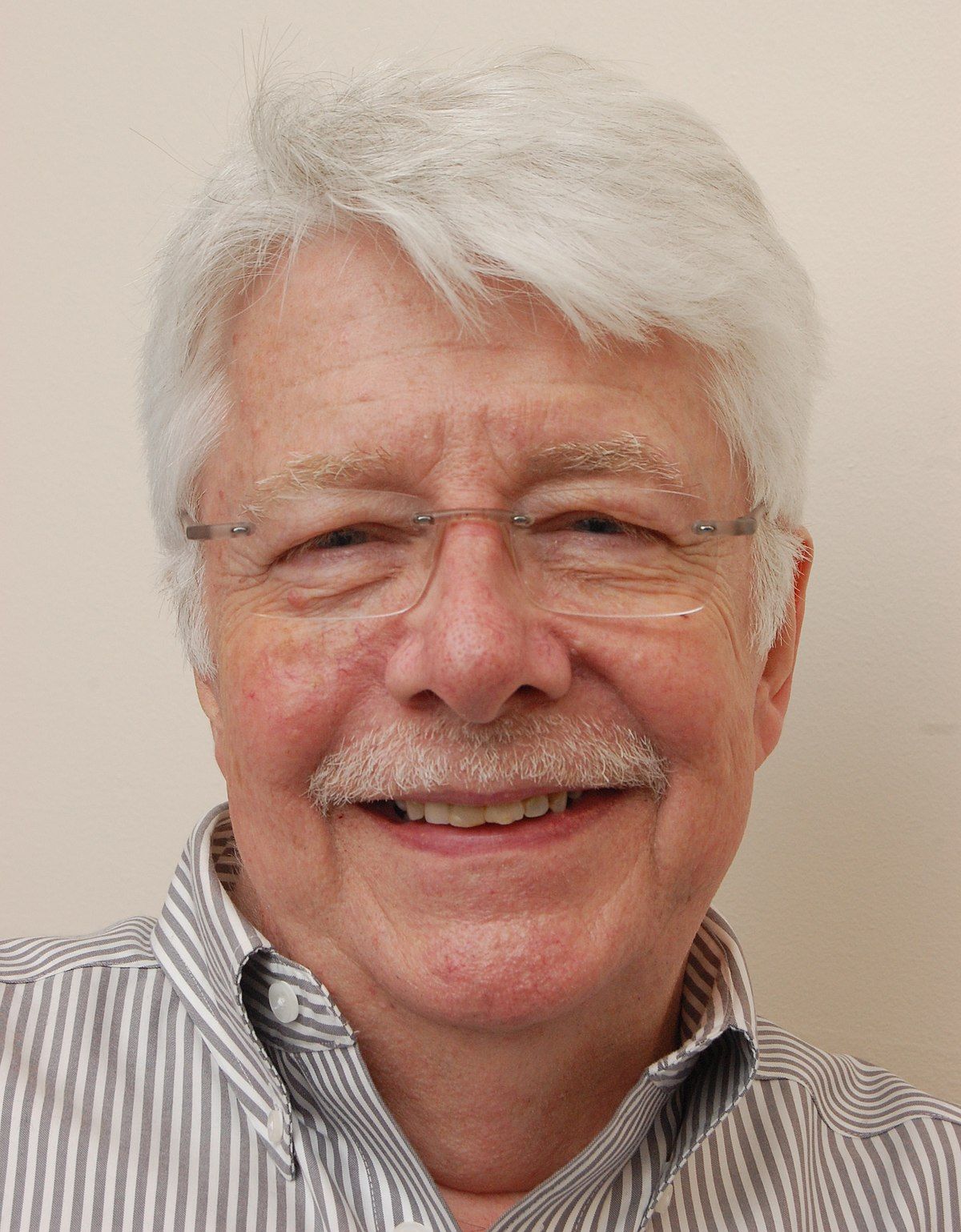 The master tape of the song “Magical Mystery Tour” then sat on the shelf for nearly five months until there was a need to do anything else with it. On September 28th, 1967, a tape copy of what was considered the best mono mix, which had been created on May 4th, 1967, was made for the film producer. This tape copy was made by George Martin and engineers Ken Scott and Richard Lush in the control room of EMI Studio Two. Since this undoubtedly was used in the released television film, it must have contained the different introductory “roll up, roll up” shouting at the song’s beginning as heard in the film. The master tape of the song “Magical Mystery Tour” then sat on the shelf for nearly five months until there was a need to do anything else with it. On September 28th, 1967, a tape copy of what was considered the best mono mix, which had been created on May 4th, 1967, was made for the film producer. This tape copy was made by George Martin and engineers Ken Scott and Richard Lush in the control room of EMI Studio Two. Since this undoubtedly was used in the released television film, it must have contained the different introductory “roll up, roll up” shouting at the song’s beginning as heard in the film.
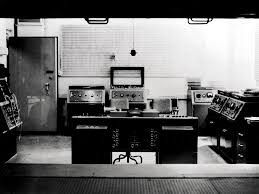 Then, on November 6th, 1967, a stereo mix was attempted in the control room of EMI Studio Two by George Martin, Geoff Emerick and Ken Scott. While four attempts were made on this day, the group noticed that something additional was needed to get the song to a releasable state (probably the “roll up, roll up” introductory shouting which concludes with the words “hurry, hurry!” that continue with the harmony vocals that follow). Therefore, these four attempts at a stereo mix were deemed unusable, as was the best mono mix from May 4th, 1967. Then, on November 6th, 1967, a stereo mix was attempted in the control room of EMI Studio Two by George Martin, Geoff Emerick and Ken Scott. While four attempts were made on this day, the group noticed that something additional was needed to get the song to a releasable state (probably the “roll up, roll up” introductory shouting which concludes with the words “hurry, hurry!” that continue with the harmony vocals that follow). Therefore, these four attempts at a stereo mix were deemed unusable, as was the best mono mix from May 4th, 1967.
The next day, November 7th, 1967, was when both the released mono and stereo mixes were created for the song “Magical Mystery Tour.” George Martin, Geoff Emerick and 2nd engineer Graham Kirkby, along with The Beatles, assembled in the control room of EMI Studio Two to create the majority of the mono and stereo mixes of the songs for the film.
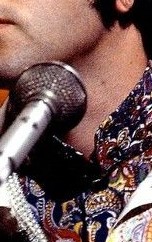 The first to be tackled was the stereo mix with Paul inserting a new vocal line (probably the new “roll up, roll up” introductory shouting) which was recorded as an overdub on this day as well. Two attempts at this stereo mix were made, numbered 5 and 6, the sixth being the one used on the finished record. Directly after this was complete, the mono mix was created which incorporated the same new McCartney vocal overdub as the stereo mix had. Three attempts at the mono mix were made, numbered 8 through 10, the tenth being the keeper. After this, tape copies of both the stereo and mono mixes were made “for Capitol Records, its representative Voyle Gilmore hand-carrying them back to the USA,” as quoted in the book “The Beatles Recording Sessions.” The first to be tackled was the stereo mix with Paul inserting a new vocal line (probably the new “roll up, roll up” introductory shouting) which was recorded as an overdub on this day as well. Two attempts at this stereo mix were made, numbered 5 and 6, the sixth being the one used on the finished record. Directly after this was complete, the mono mix was created which incorporated the same new McCartney vocal overdub as the stereo mix had. Three attempts at the mono mix were made, numbered 8 through 10, the tenth being the keeper. After this, tape copies of both the stereo and mono mixes were made “for Capitol Records, its representative Voyle Gilmore hand-carrying them back to the USA,” as quoted in the book “The Beatles Recording Sessions.”
The 1967 stereo mix has the rhythm track on the left channel and the brass section on the right channel, while the bass guitar and all of the vocals are centered in the mix. And, of course, the bus sounds are made sure to be panning from channel to channel to give the desired effect.
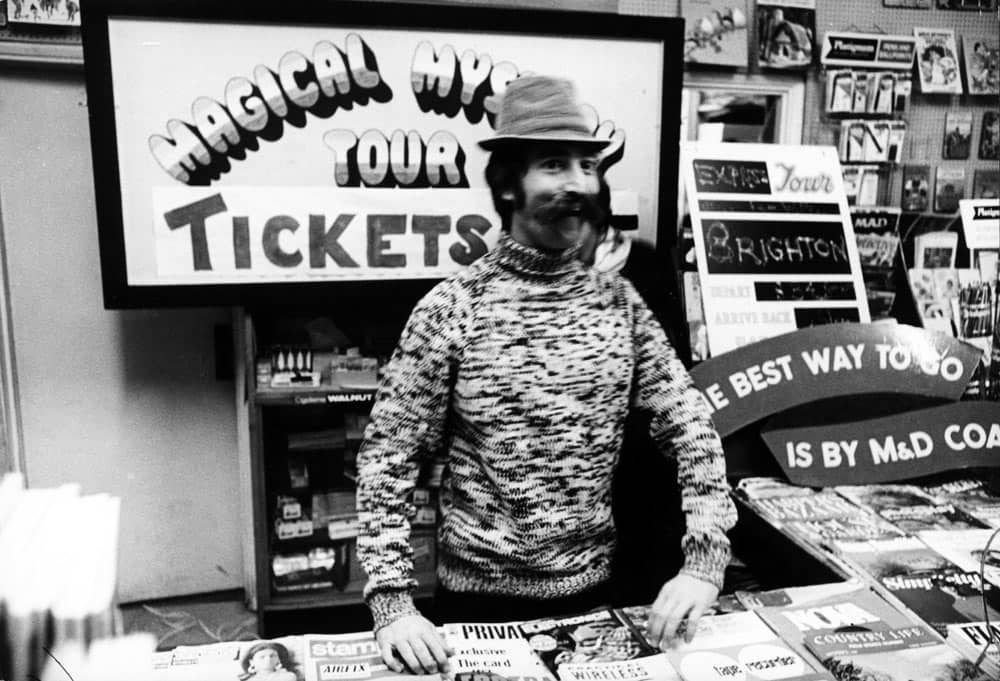 As many Beatles fans may notice, another difference between the film version and record version of the song is John Lennon’s recitation during the instrumental section of the song which begins “When a man buys a ticket for a Magical Mystery Tour…” No indication is given as to this being recorded in EMI Studios, so it is assumed that it was added to the film soundtrack and is not considered an actual element of the recorded song. This is not unlike the intended spoken word introduction to “Lucy In The Sky With Diamonds” as proposed to be included in the film “Yellow Submarine.” (See the history of “Lucy In The Sky With Diamonds” for details.) As many Beatles fans may notice, another difference between the film version and record version of the song is John Lennon’s recitation during the instrumental section of the song which begins “When a man buys a ticket for a Magical Mystery Tour…” No indication is given as to this being recorded in EMI Studios, so it is assumed that it was added to the film soundtrack and is not considered an actual element of the recorded song. This is not unlike the intended spoken word introduction to “Lucy In The Sky With Diamonds” as proposed to be included in the film “Yellow Submarine.” (See the history of “Lucy In The Sky With Diamonds” for details.)
Sometime between March 22nd and June 15th, 1993, Paul and his band recorded a live rendition of the song as included on his “Paul Is Live” album of that year.
 Giles Martin was given the task in 2023 of creating a "demix remix" of the song "Magical Mystery Tour" for inclusion on the 50th Anniversary edition of the compilation album "The Beatles / 1967 - 1970" (aka "The Blue Album"). With Peter Jackson's AI technology at his disposal, Giles Martin was able to utilize this "new machine-learning techology" so that "individual elements that were put to tape...and were therefore impossible to separate" could be "untangled, allowing Giles to put the original recordings back together with even greater clarity and impact," as stated by John Harris in the liner notes of the above mentioned album. This is arguably the most vibrant and satisfying stereo version of the song to date, ardent Beatles fans enjoying the slightly increased volume of the guitars in this new mix. Giles Martin was given the task in 2023 of creating a "demix remix" of the song "Magical Mystery Tour" for inclusion on the 50th Anniversary edition of the compilation album "The Beatles / 1967 - 1970" (aka "The Blue Album"). With Peter Jackson's AI technology at his disposal, Giles Martin was able to utilize this "new machine-learning techology" so that "individual elements that were put to tape...and were therefore impossible to separate" could be "untangled, allowing Giles to put the original recordings back together with even greater clarity and impact," as stated by John Harris in the liner notes of the above mentioned album. This is arguably the most vibrant and satisfying stereo version of the song to date, ardent Beatles fans enjoying the slightly increased volume of the guitars in this new mix.
Song Structure and Style
The song “Magical Mystery Tour” may be somewhat deficient in words, but structurally and arrangement-wise, it has much to offer. The format consists of ‘verse/ refrain/ verse/ refrain/ bridge/ verse/ refrain/ refrain’ (or ababcabb) with an introduction and conclusion thrown in as well.
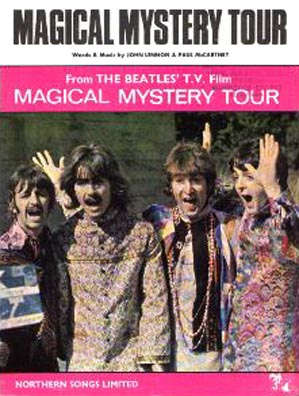 The introduction is six measures long, the first two measures in a slow 4/4 beat with crashing cymbals and slashing open hi-hats while a trumpet fanfare blasts to get our attention. The three chord pattern heard in these opening measures, played by the trumpets along with the piano, bass and guitars, is actually a precursor of the last three chords of the first refrain with the lyrics “coming to take you away” sung in harmony in the foreground. The beat then switches into double-time for the remaining four measures of the introduction and, as all of the instruments fade away into the background, the "carnival barker" calls out “Roll up, roll up for the magical mystery tour. Step right this way!” with only the drums heard to keep the rhythm going. The introduction is six measures long, the first two measures in a slow 4/4 beat with crashing cymbals and slashing open hi-hats while a trumpet fanfare blasts to get our attention. The three chord pattern heard in these opening measures, played by the trumpets along with the piano, bass and guitars, is actually a precursor of the last three chords of the first refrain with the lyrics “coming to take you away” sung in harmony in the foreground. The beat then switches into double-time for the remaining four measures of the introduction and, as all of the instruments fade away into the background, the "carnival barker" calls out “Roll up, roll up for the magical mystery tour. Step right this way!” with only the drums heard to keep the rhythm going.
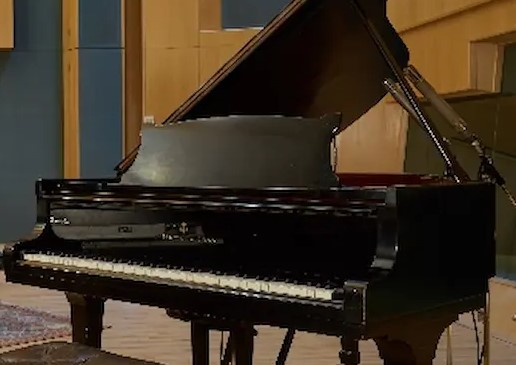 The first sixteen-measure verse then begins with the guitars and piano only pounding out the chord changes when they occur, as harmony vocals sing out the catch phrase of the song, namely, “Roll uuuuuuup! Roll up for the mystery tour!,” which is repeated four times in this verse. The first two repeats, which comprise the first eight measures, are identical except for the drum fill in the eighth measure to segue into the second half of the verse. This second half, or measures nine through sixteen, has various additional elements added, such as the guitars and piano are now playing the chord pattern continuously instead of just on the chord changes. The bass guitar is heard in these measures for the first time, as is John’s lower octave singing “that’s an invitation…to make a reservation.” The first sixteen-measure verse then begins with the guitars and piano only pounding out the chord changes when they occur, as harmony vocals sing out the catch phrase of the song, namely, “Roll uuuuuuup! Roll up for the mystery tour!,” which is repeated four times in this verse. The first two repeats, which comprise the first eight measures, are identical except for the drum fill in the eighth measure to segue into the second half of the verse. This second half, or measures nine through sixteen, has various additional elements added, such as the guitars and piano are now playing the chord pattern continuously instead of just on the chord changes. The bass guitar is heard in these measures for the first time, as is John’s lower octave singing “that’s an invitation…to make a reservation.”
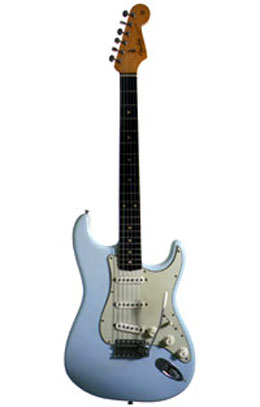 The first refrain is then heard, which is only six measures long and features the re-emergence of the trumpets which are playing in eighth note harmony in the first three measures and impressively stepping it up to sixteenth notes in the fourth measure. Paul reaches way up in his vocal range to announce “The Magical Mystery Tour is coming to take you away” while the guitars, piano and bass are only playing on the chord changes once again. The tempo of the refrain reverts back to the slow 4/4 beat of the introduction throughout, complete with crashing cymbals. Harmony vocals kick in during the fifth and sixth measures singing “coming to take you away” while the instrumentation is a complete repeat of the first two measures of the introduction. The first refrain is then heard, which is only six measures long and features the re-emergence of the trumpets which are playing in eighth note harmony in the first three measures and impressively stepping it up to sixteenth notes in the fourth measure. Paul reaches way up in his vocal range to announce “The Magical Mystery Tour is coming to take you away” while the guitars, piano and bass are only playing on the chord changes once again. The tempo of the refrain reverts back to the slow 4/4 beat of the introduction throughout, complete with crashing cymbals. Harmony vocals kick in during the fifth and sixth measures singing “coming to take you away” while the instrumentation is a complete repeat of the first two measures of the introduction.
 The second verse then begins, which is also sixteen measures long and is basically a full repeat of the first verse except for a few minor differences. First noticed is a simple drum fill by Ringo in the fourth measure, then we have the first appearance of the “coach noises” sound effect in the sixth and seventh measures, which pans from the left to the right channel. Paul makes the vocal interjections this time around, singing “They’ve got everything you need…Satisfaction guaranteed.” Also, on the three-beat of measures nine through sixteen, the trumpets punctuate the arrangement with staccato blasts. This is followed by an identical repeat of the refrain. The second verse then begins, which is also sixteen measures long and is basically a full repeat of the first verse except for a few minor differences. First noticed is a simple drum fill by Ringo in the fourth measure, then we have the first appearance of the “coach noises” sound effect in the sixth and seventh measures, which pans from the left to the right channel. Paul makes the vocal interjections this time around, singing “They’ve got everything you need…Satisfaction guaranteed.” Also, on the three-beat of measures nine through sixteen, the trumpets punctuate the arrangement with staccato blasts. This is followed by an identical repeat of the refrain.
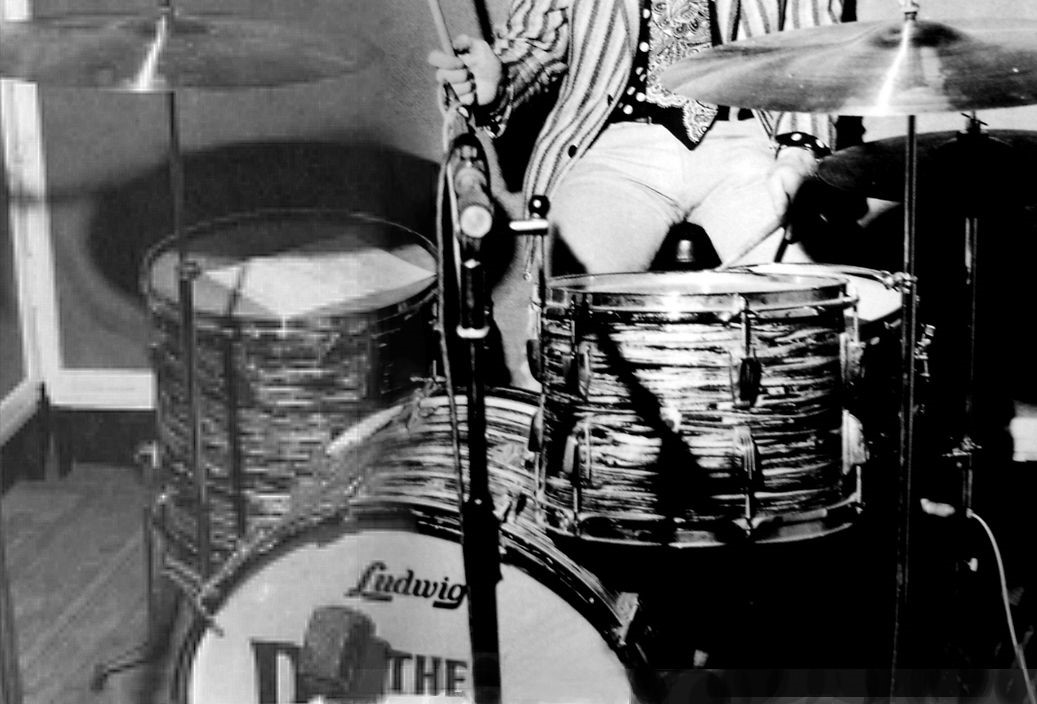 We then sidestep into a subdued, mostly-instrumental bridge which is ten measures long. The beat is still in the 4/4 beat of the refrain that proceeded it but Ringo shuffles and staggers rhythmically for measures one through seven. The chord pattern takes a left turn here as if indicating a change in key while the piano and bass take more prominence in the arrangement. The trumpets play a somewhat Tijuana Brass-like sequence twice during these same measures while harmony vocals sing “mystery trip” in the third and fourth measures, these being the only vocals heard in the bridge. Suddenly, in the eighth measure, a syncopated accent from the drums and rhythm instruments introduces a stair-step segue back into the main key of the song during the ninth and tenth measures, with the trumpets accenting the way. We then sidestep into a subdued, mostly-instrumental bridge which is ten measures long. The beat is still in the 4/4 beat of the refrain that proceeded it but Ringo shuffles and staggers rhythmically for measures one through seven. The chord pattern takes a left turn here as if indicating a change in key while the piano and bass take more prominence in the arrangement. The trumpets play a somewhat Tijuana Brass-like sequence twice during these same measures while harmony vocals sing “mystery trip” in the third and fourth measures, these being the only vocals heard in the bridge. Suddenly, in the eighth measure, a syncopated accent from the drums and rhythm instruments introduces a stair-step segue back into the main key of the song during the ninth and tenth measures, with the trumpets accenting the way.
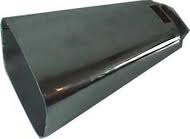 Then we arrive back in the home key with another verse, this also being sixteen measures long but with many variations. The first one noticeable is the reduction in tempo from the other verses, which acts to highlight the impending excitement that awaits us in this “mystery tour.” The vocals in the first four measures are different as well, being “Aaaaah…The Magical Mystery Tour,” followed by two hits on a cowbell at the end of the fourth measure. While the instrumentation is the same as the other verses, the “coach” effect is heard once again in the sixth and seventh measures, once again moving from left to right. Paul repeats John’s interjected lyrics from the first verse in the second half of this verse, deliberately rolling the “r” in the word “rrrreservation.” A tambourine appears prominently in the arrangement for measures nine through sixteen while the trumpets are also heard staggering their notes in the tenth, twelfth, fourteenth and sixteenth measures. Then we arrive back in the home key with another verse, this also being sixteen measures long but with many variations. The first one noticeable is the reduction in tempo from the other verses, which acts to highlight the impending excitement that awaits us in this “mystery tour.” The vocals in the first four measures are different as well, being “Aaaaah…The Magical Mystery Tour,” followed by two hits on a cowbell at the end of the fourth measure. While the instrumentation is the same as the other verses, the “coach” effect is heard once again in the sixth and seventh measures, once again moving from left to right. Paul repeats John’s interjected lyrics from the first verse in the second half of this verse, deliberately rolling the “r” in the word “rrrreservation.” A tambourine appears prominently in the arrangement for measures nine through sixteen while the trumpets are also heard staggering their notes in the tenth, twelfth, fourteenth and sixteenth measures.
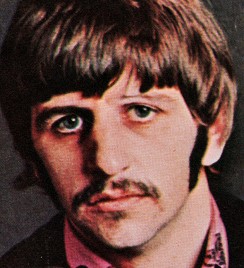 To add even more variance to the arrangement, the two refrains that follow change the time signature from 4/4 to 3/4, but with the trumpets playing simple quarter notes in 4/4 time. The rhythm instruments all pound only on the chord changes while Ringo crashes his cymbals on every downbeat of both refrains. There is a slight difference in the lyrics of the last refrain; the tour is now “dying” to take you away, not just “coming” to do it. Each refrain is the usual six measures long, while the second refrain segues perfectly into the song’s conclusion with the added phrase “take you today!” To add even more variance to the arrangement, the two refrains that follow change the time signature from 4/4 to 3/4, but with the trumpets playing simple quarter notes in 4/4 time. The rhythm instruments all pound only on the chord changes while Ringo crashes his cymbals on every downbeat of both refrains. There is a slight difference in the lyrics of the last refrain; the tour is now “dying” to take you away, not just “coming” to do it. Each refrain is the usual six measures long, while the second refrain segues perfectly into the song’s conclusion with the added phrase “take you today!”
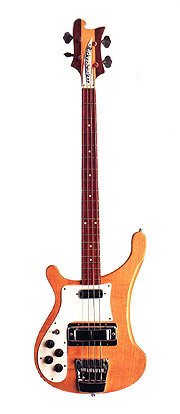 As the last blast of the trumpets extends into the third measure of this conclusion, we now enter into a lounge-like mystery setting that highlights Paul’s noodling piano work, his bass overdub, Ringo’s smattering of drums and various percussion shaking from the boys and their roadies. As the music fades away, the mood is now set: What mysteries or adventures await? Come – let’s find out! As the last blast of the trumpets extends into the third measure of this conclusion, we now enter into a lounge-like mystery setting that highlights Paul’s noodling piano work, his bass overdub, Ringo’s smattering of drums and various percussion shaking from the boys and their roadies. As the music fades away, the mood is now set: What mysteries or adventures await? Come – let’s find out!
 Paul runs the show here but, with John’s vocals to the fore in the harmony work, it comes across as a gallant team effort. Paul’s piano and bass work are both structured and meandering where needed. The excited atmosphere is brought forward perfectly by his vocal work, as is done by John and George in their harmonies. Both John and George take a rhythm guitar role on this song instrumentally while Ringo’s drums do a great part in keeping the song alive, crashing cymbals and all. And a hearty round of applause is well deserved for the trumpeters and roadie percussionists! Paul runs the show here but, with John’s vocals to the fore in the harmony work, it comes across as a gallant team effort. Paul’s piano and bass work are both structured and meandering where needed. The excited atmosphere is brought forward perfectly by his vocal work, as is done by John and George in their harmonies. Both John and George take a rhythm guitar role on this song instrumentally while Ringo’s drums do a great part in keeping the song alive, crashing cymbals and all. And a hearty round of applause is well deserved for the trumpeters and roadie percussionists!
American Releases
On November 27th, 1967, a week-and-a-half before its release in Britain, the song “Magical Mystery Tour” was released in the US on the album of the same name. It spent a total of eight straight weeks in the top spot of the Billboard album chart, ended up selling over six million copies in America alone, and was nominated for a Grammy in 1969 for “Album Of The Year.” The vinyl album continued to be reissued in the US throughout the years, while it was first released on compact disc on September 21st, 1987 and then in a newly remastered condition on September 9th, 2009.
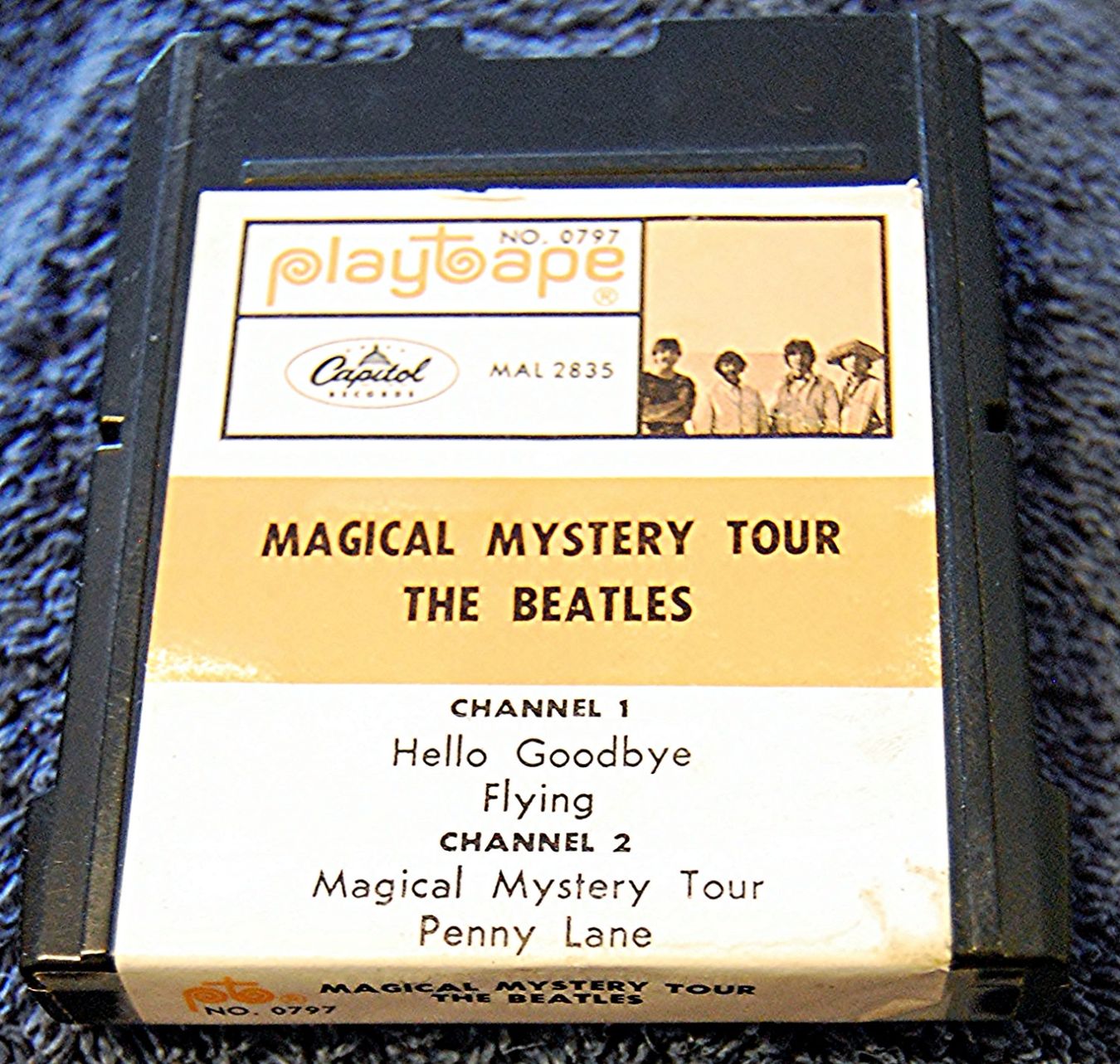 Sometime in 1967, Capitol released Beatles music on a brand new but short-lived format called "Playtapes." These tape cartridges did not have the capability to include entire albums, so a truncated four-song version of "Magical Mystery Tour" was released in early 1968 in this portable format, some rare copies having a picture from the "Help!" soundtrack album on the front of the tape. The title track, "Magical Mystery Tour," was one of the four songs on this release. These "Playtapes" are highly collectable today. Sometime in 1967, Capitol released Beatles music on a brand new but short-lived format called "Playtapes." These tape cartridges did not have the capability to include entire albums, so a truncated four-song version of "Magical Mystery Tour" was released in early 1968 in this portable format, some rare copies having a picture from the "Help!" soundtrack album on the front of the tape. The title track, "Magical Mystery Tour," was one of the four songs on this release. These "Playtapes" are highly collectable today.
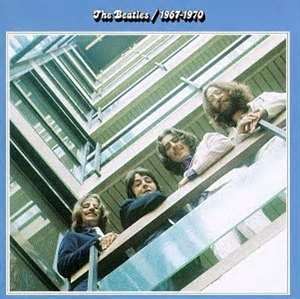 April 2nd, 1973, saw the release of “The Beatles/1967-1970” (aka “The Blue Album”), the second of two official compilation sets that were simultaneously released in the US. Although the “Magical Mystery Tour” song was considered by The Beatles at the time as just an introductory theme for the film, it was popular enough to earn its place on this #1 album. This was first released as a double-compact disc on September 20th, 1993 and then re-released as a remastered set on August 10th, 2010. April 2nd, 1973, saw the release of “The Beatles/1967-1970” (aka “The Blue Album”), the second of two official compilation sets that were simultaneously released in the US. Although the “Magical Mystery Tour” song was considered by The Beatles at the time as just an introductory theme for the film, it was popular enough to earn its place on this #1 album. This was first released as a double-compact disc on September 20th, 1993 and then re-released as a remastered set on August 10th, 2010.
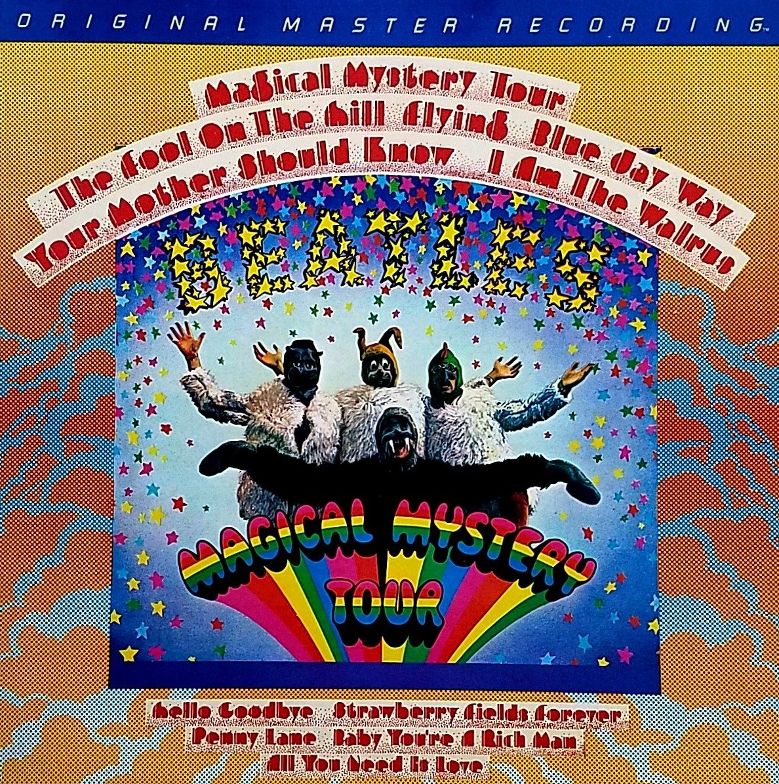 An interesting US vinyl edition of the "Magical Mystery Tour" album was released on February 1st, 1981. This was manufactured by Mobile Fidelity Sound Lab in Chatsworth, California and was part of their "Original Master Recording" series, which prepared its albums utilizing half-speed mastering technology from the original master tapes. In this case, however, they leased the master tape from EMI in the UK, not realizing that this was a second generation master tape originally supplied by Capitol Records in America. While this release sounded superior to conventional vinyl versions, it still contained the duophonic (fake stereo) mixes of "Penny Lane," "Baby, You're A Rich Man" and "All You Need Is Love." Also, as was the case with all of the vinyl editions of the album by this time, the original multi-page booklet was omitted from this new vinyl release. Nevertheless, this edition of the album was only available for a short time and is quite collectible today. An interesting US vinyl edition of the "Magical Mystery Tour" album was released on February 1st, 1981. This was manufactured by Mobile Fidelity Sound Lab in Chatsworth, California and was part of their "Original Master Recording" series, which prepared its albums utilizing half-speed mastering technology from the original master tapes. In this case, however, they leased the master tape from EMI in the UK, not realizing that this was a second generation master tape originally supplied by Capitol Records in America. While this release sounded superior to conventional vinyl versions, it still contained the duophonic (fake stereo) mixes of "Penny Lane," "Baby, You're A Rich Man" and "All You Need Is Love." Also, as was the case with all of the vinyl editions of the album by this time, the original multi-page booklet was omitted from this new vinyl release. Nevertheless, this edition of the album was only available for a short time and is quite collectible today.
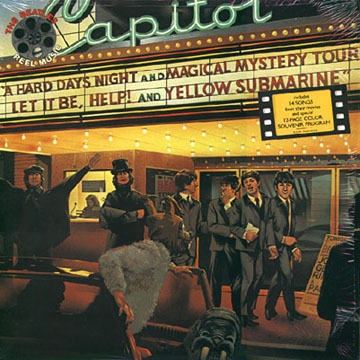 A new album was assembled and released on March 22nd, 1982, this being “Reel Music.” It featured assorted songs from The Beatles’ films, the title track of “Magical Mystery Tour” being a "shoo in" for this single-album collection. Over 12,000 promotional copies were also printed, these being on translucent gold vinyl. The album peaked at #19 on the Billboard album charts, even spawning a compilation-style single entitled “The Beatles Movie Medley” released on the same day, which featured a bit of “Magical Mystery Tour” at the beginning. This single peaked impressively at #12 on the Billboard Hot 100 and was thereafter included in the vinyl box set "The Beatles Singles Collection" that was released in the US on December 6th, 1982. A new album was assembled and released on March 22nd, 1982, this being “Reel Music.” It featured assorted songs from The Beatles’ films, the title track of “Magical Mystery Tour” being a "shoo in" for this single-album collection. Over 12,000 promotional copies were also printed, these being on translucent gold vinyl. The album peaked at #19 on the Billboard album charts, even spawning a compilation-style single entitled “The Beatles Movie Medley” released on the same day, which featured a bit of “Magical Mystery Tour” at the beginning. This single peaked impressively at #12 on the Billboard Hot 100 and was thereafter included in the vinyl box set "The Beatles Singles Collection" that was released in the US on December 6th, 1982.
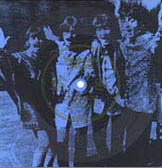 In July of 1982, a very interesting promotional flexi-disc record featuring the song “Magical Mystery Tour” was released, which was printed on blue vinyl and adhered to a photo of the group taken from the “I Am The Walrus” footage from the movie. This single, paired with “Here Comes The Sun,” was given away free at three American record store chains (“Sam Goody,” “Discount” and “Musicland”) whenever a Capitol Beatles album was purchased. In July of 1982, a very interesting promotional flexi-disc record featuring the song “Magical Mystery Tour” was released, which was printed on blue vinyl and adhered to a photo of the group taken from the “I Am The Walrus” footage from the movie. This single, paired with “Here Comes The Sun,” was given away free at three American record store chains (“Sam Goody,” “Discount” and “Musicland”) whenever a Capitol Beatles album was purchased.
On June 30th, 1992, a new CD box set was released in the U.S. entitled “Compact Disc EP Collection.” This set comprised individual CDs to correspond with each original British EP, “Magical Mystery Tour” being the final EP installment in their home country, here presented in both mono and stereo.
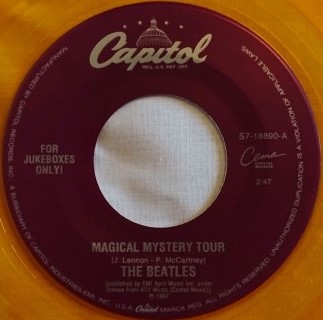 Many may not realize that the song “Magical Mystery Tour” was officially released by Capitol as a single in the US. This was on January 24th, 1996 as a Cema series “For Jukebox Only” release on orange vinyl with "The Fool On The Hill" as the b-side. This limited edition single may be a little hard to come by today, as it obviously will be more so in the future. Many may not realize that the song “Magical Mystery Tour” was officially released by Capitol as a single in the US. This was on January 24th, 1996 as a Cema series “For Jukebox Only” release on orange vinyl with "The Fool On The Hill" as the b-side. This limited edition single may be a little hard to come by today, as it obviously will be more so in the future.
 September 9th, 2009 was also the release of the CD box set “The Beatles In Mono,” which contained the entire mono Beatles catalog in a newly remastered condition, "Magical Mystery Tour" being among the collection. The vinyl edition of this box set was released on September 9th, 2014. September 9th, 2009 was also the release of the CD box set “The Beatles In Mono,” which contained the entire mono Beatles catalog in a newly remastered condition, "Magical Mystery Tour" being among the collection. The vinyl edition of this box set was released on September 9th, 2014.
Interestingly, on October 8th, 2012, a restored version of the film “Magical Mystery Tour” was released on DVD and Blu-ray, available also as a deluxe edition “Collectors Box” which included an actual vinyl EP set as originally released in Britain but in remastered mono. As part of this set, this was the first time the vinyl EP was released in America.
Paul McCartney’s live rendition of the song was featured on his album “Paul Is Live,” which was released on November 8th, 1993.
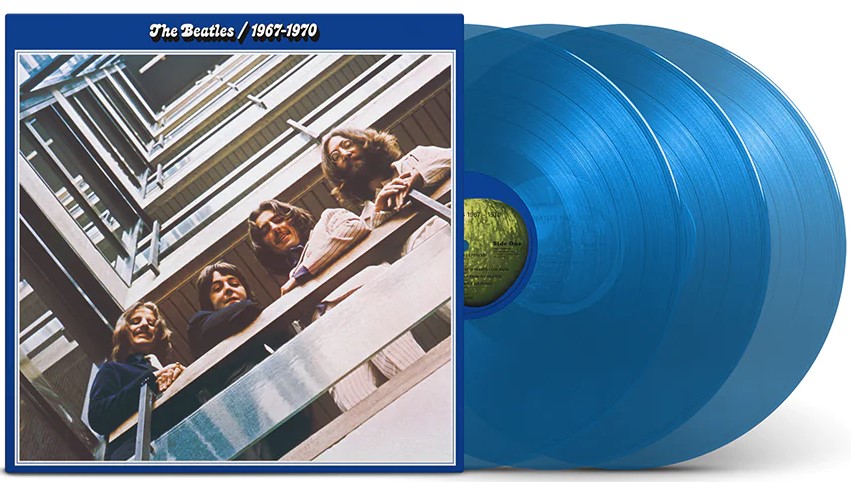 A 50th Anniversay edition of the compilation album "The Beatles / 1967 - 1970" (aka "The Blue Album") was released on November 10th, 2023. This expanded release included 12 additional songs for a total of 38 tracks, including the new mix of the song "Magical Mystery Tour" detailed above, and was made available as a double CD and as a triple vinyl release on both black and blue vinyl. A 50th Anniversay edition of the compilation album "The Beatles / 1967 - 1970" (aka "The Blue Album") was released on November 10th, 2023. This expanded release included 12 additional songs for a total of 38 tracks, including the new mix of the song "Magical Mystery Tour" detailed above, and was made available as a double CD and as a triple vinyl release on both black and blue vinyl.
Live Performances
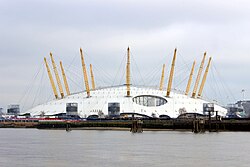 While The Beatles themselves never performed the song live, Paul McCartney took advantage of the popularity of the song while on tour. He first used the song during his “New World Tour,” which ran from February 18th (Italy) to December 16th (Chile), 1993. His “The US Tour,” which spanned from September 16th (Miami) to November 30th (Los Angeles), 2005, highlighted “Magical Mystery Tour” as the opening number of the shows. His “Good Evening Europe” Tour, which ran from December 2nd (Hamburg) to 22nd (at the O2 Arena in London), 2009, also used the song at the beginning of the set list. While The Beatles themselves never performed the song live, Paul McCartney took advantage of the popularity of the song while on tour. He first used the song during his “New World Tour,” which ran from February 18th (Italy) to December 16th (Chile), 1993. His “The US Tour,” which spanned from September 16th (Miami) to November 30th (Los Angeles), 2005, highlighted “Magical Mystery Tour” as the opening number of the shows. His “Good Evening Europe” Tour, which ran from December 2nd (Hamburg) to 22nd (at the O2 Arena in London), 2009, also used the song at the beginning of the set list.
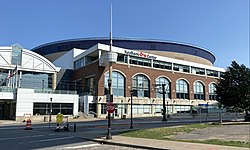 His long running “Up And Coming Tour,” spanning from March 28th, 2010 (Phoenix) to June 10th, 2011 (Las Vegas), featured the song sporadically as the opening number. Then, his hugely successful “On The Run” Tour, running from July 15th, 2011 (New York City) to November 29th, 2012 (Edmonton, Canada), sometimes opened with the song, alternating it with “Hello Goodbye” on some occasions. "Magical Mystery Tour" was then alternated with "Eight Days A Week" as the opening number of his "Out There" tour, which began on May 4th, 2013 (Belo Horizonte, Brazil) and concluded on October 22nd, 2015 (at the First Niagara Center in Buffalo, New York). His long running “Up And Coming Tour,” spanning from March 28th, 2010 (Phoenix) to June 10th, 2011 (Las Vegas), featured the song sporadically as the opening number. Then, his hugely successful “On The Run” Tour, running from July 15th, 2011 (New York City) to November 29th, 2012 (Edmonton, Canada), sometimes opened with the song, alternating it with “Hello Goodbye” on some occasions. "Magical Mystery Tour" was then alternated with "Eight Days A Week" as the opening number of his "Out There" tour, which began on May 4th, 2013 (Belo Horizonte, Brazil) and concluded on October 22nd, 2015 (at the First Niagara Center in Buffalo, New York).
Paul also chose to make a special performance of the song at The Queen's Diamond Jubilee Concert on June 4th, 2012 outside Buckinham Palace. "Magic Mystery Tour" was the first of his five-song set, his appearance being the final musical segment of the entire concert.
 "Magical Mystery Tour" 1974 movie poster
|
Conclusion
Unfortunately, while the overall consensus is that the “Magical Mystery Tour” film was a disastrous and ill-conceived flop, many writers and fans alike these days consider the brilliantly written and produced music an embarrassment as well. The title track, as we’re reviewing here, probably takes the most flak, being that it was used as the introduction to the television movie. Let us please not let this taint our opinion of the song.
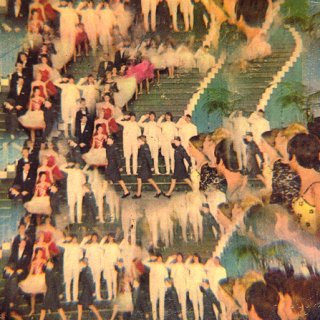 For those of us who live to remember the impact of the music when we first heard it, no matter whether we are first, second, third generation fans or beyond, we undoubtedly agree that the fanfare-like atmosphere that the “Magical Mystery Tour” song portrayed whetted our appetite for the picturesque imagery that followed it on the album (or EP). Like the “Sgt. Pepper” theme before it, the song commanded attention as if to herald in a new era, or maybe to get us settled in our seats and strapped in for a “magical” ride. For those of us who live to remember the impact of the music when we first heard it, no matter whether we are first, second, third generation fans or beyond, we undoubtedly agree that the fanfare-like atmosphere that the “Magical Mystery Tour” song portrayed whetted our appetite for the picturesque imagery that followed it on the album (or EP). Like the “Sgt. Pepper” theme before it, the song commanded attention as if to herald in a new era, or maybe to get us settled in our seats and strapped in for a “magical” ride.
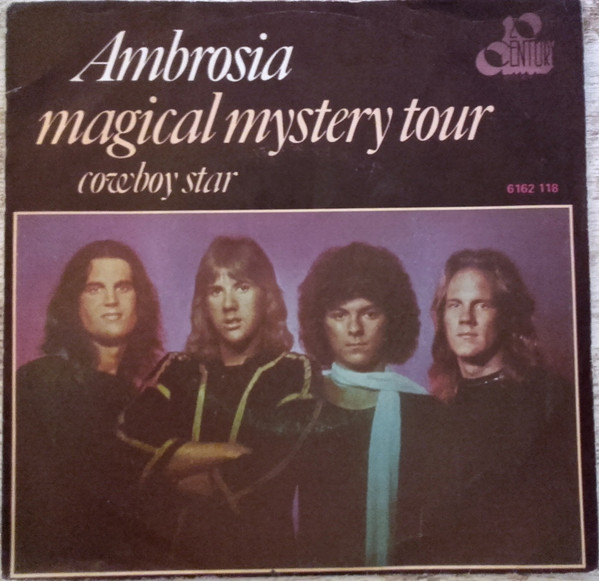 And in the process, the song stood on its own and received substantial airplay and respectability enough to be included in one of the first worldwide officially released Beatles compilation albums, namely “The Blue Album.” Incredibly performed cover versions also proliferated, such as by the group Ambrosia who took the song into the Billboard Top 40, as well as the version by “Cheap Trick,” who starts out their popular “Greatest Hits” package with the song. And in the process, the song stood on its own and received substantial airplay and respectability enough to be included in one of the first worldwide officially released Beatles compilation albums, namely “The Blue Album.” Incredibly performed cover versions also proliferated, such as by the group Ambrosia who took the song into the Billboard Top 40, as well as the version by “Cheap Trick,” who starts out their popular “Greatest Hits” package with the song.
Whatever intention the song was meant for, it commands the listener’s attention to this day. “It’s coming to take you away, take you today…,” whatever “it” is.
Song Summary
“Magical Mystery Tour”
Written by: John Lennon / Paul McCartney
-
Song Written: April 11 – May 3, 1967
-
Song Recorded: April 25, 26, 27, May 3, November 7, 1967
-
First US Release Date: November 27, 1967
-
-
US Single Release: Capitol Cema #S7-18890
-
Highest Chart Position: n/a
-
British Album Release: Apple #PSCP 718 “The Beatles/1967-1970”
-
Length: 2:48
-
Key: D major
-
Producer: George Martin
-
Engineers: Geoff Emerick, Malcolm Addey, Richard Lush, Graham Kirkby
Instrumentation (most likely):
-
Paul McCartney - Lead and Harmony Vocals, Piano (Hamburg Steinway Baby Grand), Bass Guitar (1964 Rickenbacker 4001 S), percussion
-
John Lennon - Rhythm Guitar (1964 Gibson J-160E), Harmony Vocals, percussion
-
George Harrison - Rhythm Guitar (1961 Sonic Blue Stratocaster), Harmony Vocals, percussion
-
Ringo Starr - Drums (1964 Ludwig Super Classic Black Oyster Pearl), percussion
-
Mal Evans - percussion
-
Neil Aspinall - percussion
-
David Mason - Trumpet
-
Elgar Howarth - Trumpet
-
Roy Copestake - Trumpet
-
John Wilbraham - Trumpet
Written and compiled by Dave Rybaczewski
|
IF YOU WOULD LIKE TO MAKE A DONATION TO KEEP THIS WEBSITE UP AND RUNNING, PLEASE CLICK BELOW!
Sign Up Below for our MONTHLY BEATLES TRIVIA QUIZ!
|